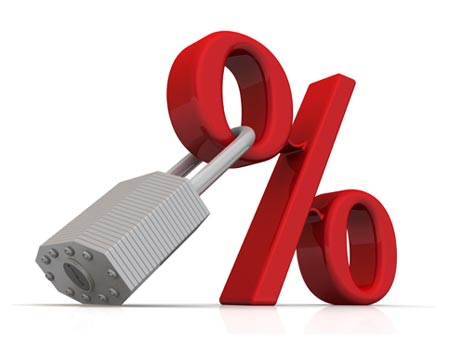What Is the Future of Mortgage Rates?
We at mortgage visons think, One of the most frequently asked topics is what can be expected from mortgage rates in the future. We’re now enjoying some of the lowest mortgage rates in history, but for how long?
For the majority of 2021, fixed mortgage rates have been quite constant. The only exception was in late February and early March when fixed rates rose by as much as 0.40 percent in a matter of weeks. Fixed mortgage rates for insured and insurable mortgages remained below 2% despite the hike. To put this in context, the lowest five-year fixed rate until 2020 was 2.14 percent. It took a pandemic to reduce them to less than 2%.
What is a fixed-rate mortgage?

A fixed-rate mortgage (FRM) is a loan in which the interest rate on the note remains constant during the loan’s duration, as opposed to loans in which the interest rate fluctuates or “floats.” As a result, payment amounts and loan terms are set in stone, and the individual responsible for repaying the loan benefits from a single, constant payment and the ability to arrange a budget around it.
Since the beginning of April, fixed mortgage rates have been gradually decreasing, but only modestly. The most recent rate cut occurred this week, with the lowest 5 years fixed rate for an insured mortgage falling to 1.64 percent. Depending on your situation, 5 year fixed mortgage rates range from 1.64 percent to 2.14 percent. Read more about Shorter-term VS Longer-term mortgage
What is a variable-rate mortgage?
Throughout a variable rate mortgage, the CIBC Prime rate will change. Your regular payment will remain the same, but your interest rate will fluctuate depending on market conditions. This affects how much principal you pay off each month. When interest rates on variable-rate mortgages fall, more of your monthly payment is applied to the debt. Furthermore, if interest rates rise, a larger portion of your payment will go toward interest.
While the prime rate has remained steady throughout 2021, variable-rate discounts have risen by as much as 0.30 percent since the start of the year. For an insured three-year period, this reduces the lowest variable rate to prime -1.46 percent (0.99 percent). Depending on your situation, variable-rate mortgages run from 0.99 percent to 1.40 percent.
Projections- Bank of Canada

Since January, long-term government bond rates have grown from 0.3 percent to 1.0 percent. Mortgage rates have risen by around a half-percentage point as a result of this.
As a result of an improved forecast for the Canadian economy, the Bank of Canada (BoC) signaled in May that it would start hiking short-term interest rates in late 2022. The Bank of Canada confirmed this economic and rate outlook in its June release.
By historical standards, 5-year mortgage rates are likely to remain low, but they are expected to rise.
The Bank of Canada has stated that variable interest rates would remain low until the economy has recovered and inflation has reached about 2%. That’s fantastic, but it hasn’t stopped fixed mortgage rates from skyrocketing. While low rates are supposed to help borrowers weather the storm, it appears that many Canadians are using them to buy bigger houses. The expectation of continued low-interest rates indicates that the economy will not fully recover until late 2022. Learn more about How Useful Are Free Credit Scores When Applying for a Mortgage?
The Bank of Canada will largely follow the lead of the Federal Reserve of the United States, which is not forecast to raise interest rates until 2023. It’s unusual for Canada to take the lead on interest rate changes. We may expect the Canadian dollar to start closing the gap against the US if they stick to their word and climb ahead of the US dollar. A stronger Canadian dollar makes us a less appealing trading partner, reducing our export opportunities.
Conclusion
There aren’t expected to be any significant changes in fixed or variable rates for the rest of 2021. No discernible movement is not the same as no movement at all. Rates can fluctuate in both directions. The pandemic and the economy continue to be fraught with uncertainty. Rates will remain low as long as there is uncertainty. While mortgage rates will eventually rise, no big fluctuation is expected. Anything can happen, and only time will tell.

Recent Comments